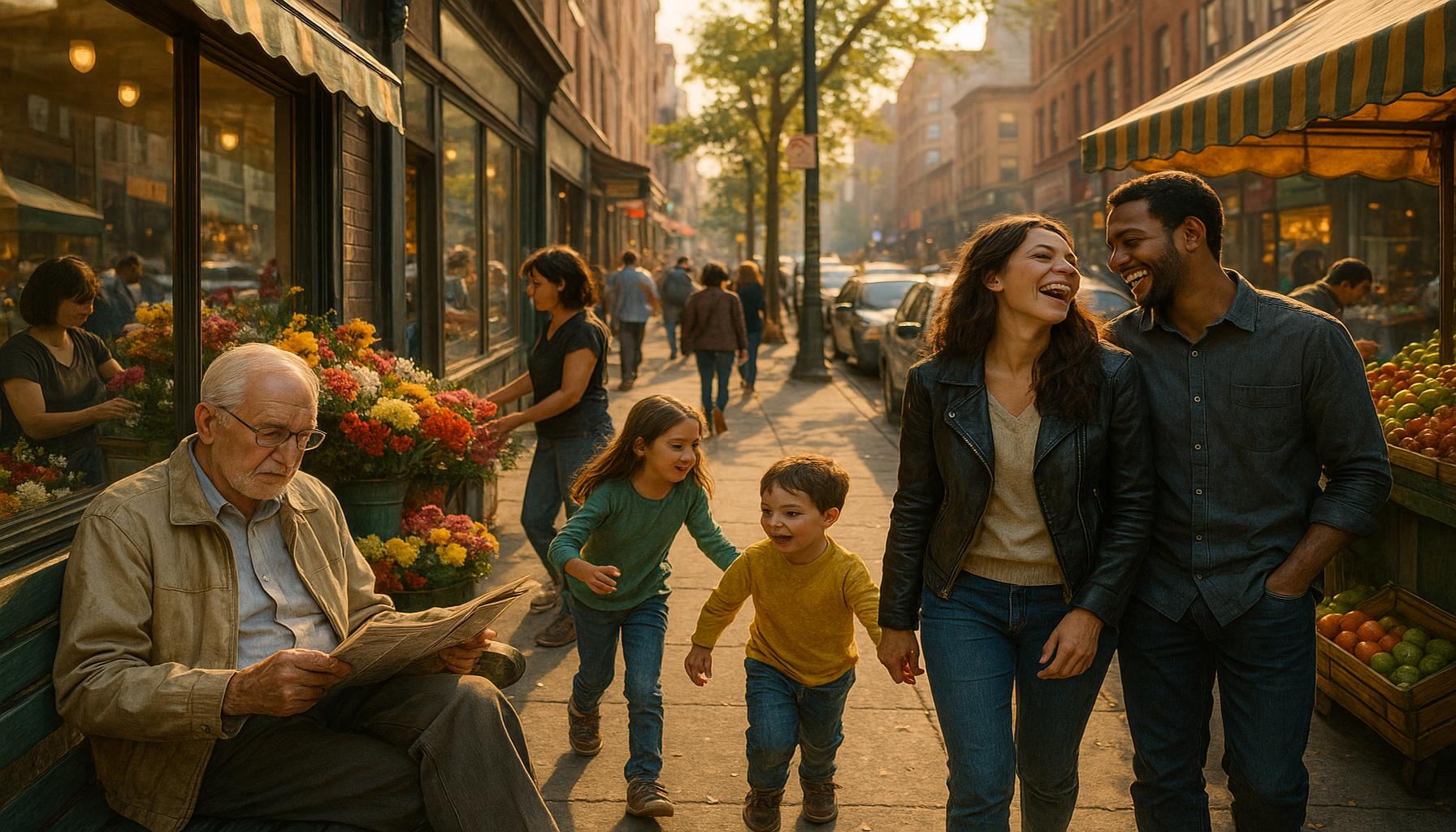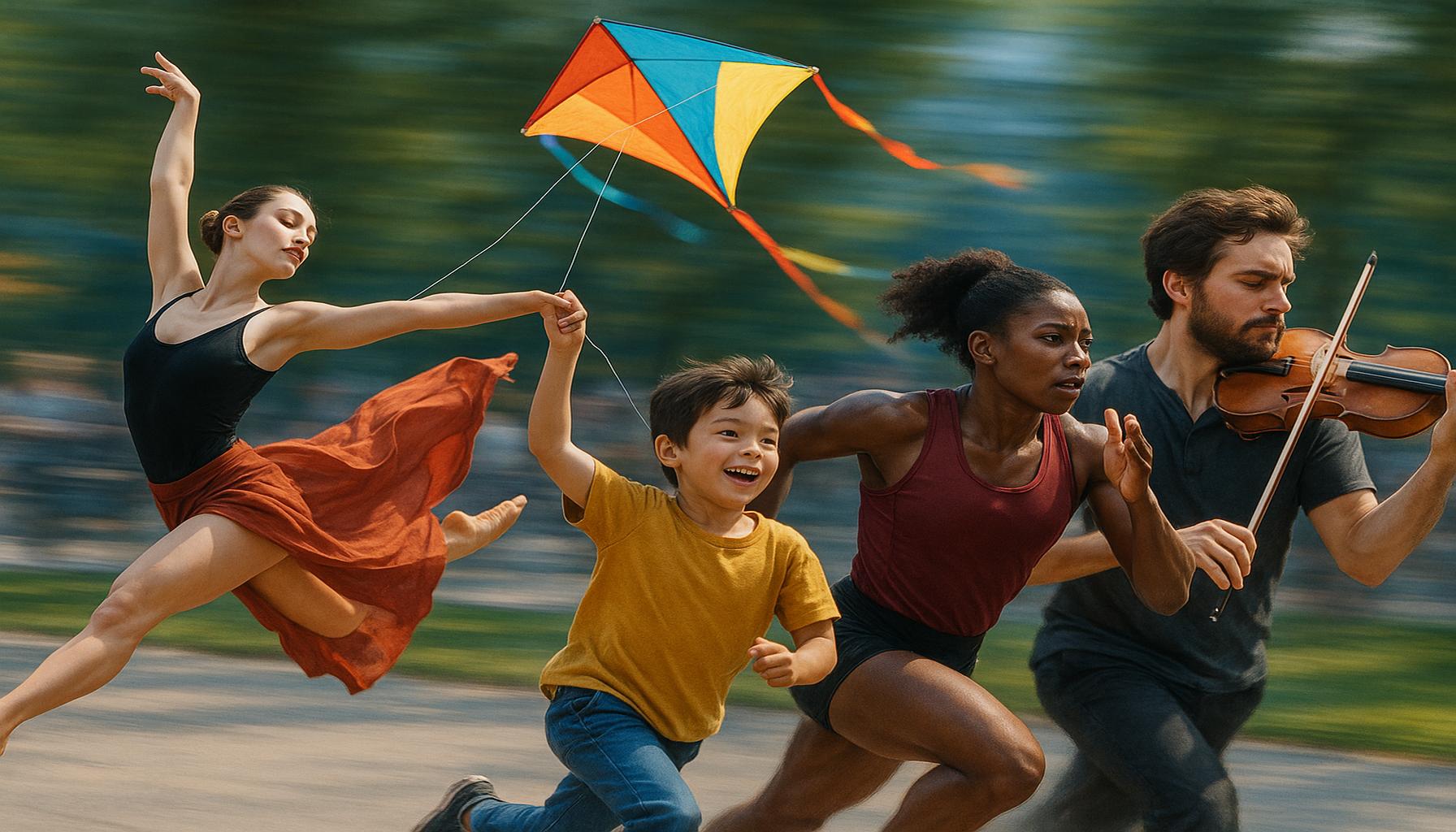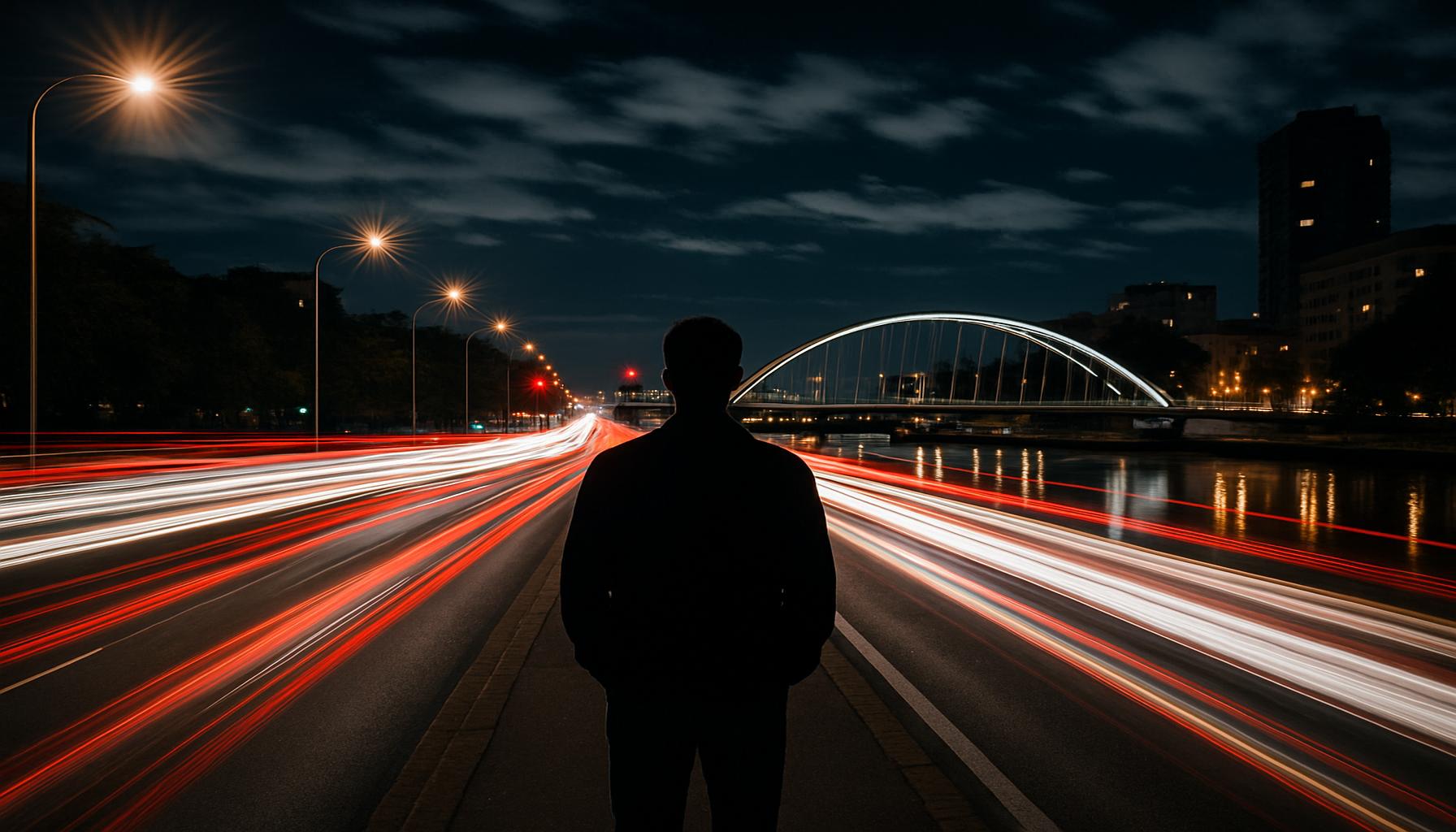Street Photography: Capturing Everyday Life and Beauty in the Little Things

The Allure of Everyday Moments
In a world filled with fleeting moments, street photography serves as a powerful medium to capture the essence of everyday life. This unique art form invites photographers to explore their surroundings, unveiling the beauty hidden in the mundane. From bustling city streets to quiet suburban corners, the opportunities for memorable images are numerous. Each photograph acts as a testament to the unscripted drama that unfolds in public spaces, consistently revealing the dynamic pulse of society.
Street photography is not just about taking pictures; it is about capturing individual stories within a single frame. The streets become an intricate tapestry of lives intersecting, allowing photographers to document these fleeting encounters. As a result, the focus often shifts to the glimpses of humanity, revealing authentic interactions, emotions, and stories. Consider a candid shot of a stranger laughing on a subway, or a child joyfully playing in a park—these moments encapsulate the human experience in ways that staged photographs often cannot.
- Glimpses of Humanity: Street photography reveals authentic interactions, emotions, and stories. Capturing moments like a hurried businessman sharing a laugh with a street performer or a couple sharing a quiet moment can communicate deep emotional truths.
- The Unseen Beauty: It focuses on the details often overlooked—like the play of light and shadow. For instance, a simple reflection on a glass building or the way sunlight filters through the trees can create stunning visuals that elevate the ordinary.
- Cultural Reflection: Each photograph reflects the diversity and vibrancy of urban landscapes. Whether in a crowded market in Los Angeles or a serene park in Seattle, street photography showcases the rich tapestry of cultural identities and community life.
For photographers, the streets are an open canvas filled with inspiration. Every scene presents a narrative worthy of exploration. Renowned street photographers, such as Henri Cartier-Bresson and Vivian Maier, paved the way for aspiring artists to transform ordinary life into compelling visual stories. Cartier-Bresson’s technique of the “decisive moment” highlights the importance of being present and alert, while Maier’s poignant imagery showcases the beauty in everyday interactions.
Understanding the techniques behind street photography is essential for anyone looking to hone their skills. Key elements to consider include:
- Timing: Capturing the perfect moment is an art in itself. A fleeting expression or interaction can transform an ordinary sight into a profound narrative.
- Perspective: Experimenting with angles can drastically change the emotional impact of an image. A low-angle shot might emphasize a bustling cityscape’s grandeur, while a bird’s-eye view can provide context to a crowded scene.
- Connection: Engaging with your environment helps create meaningful compositions. Building rapport with subjects can lead to more intimate captures, as seen in the works of photographers who interact with their subjects before clicking the shutter.
As we dive deeper into this fascinating genre, you’ll discover how to embrace your surroundings, find beauty in the little things, and tell your unique story through your lens. Street photography encourages us to slow down and observe—the true art lies in finding extraordinary elements woven into the fabric of daily existence. Whether you are a novice or experienced photographer, every click can resonate with the heartbeat of your community.

DISCOVER MORE: Click here to learn about the mental health benefits of creative writing
Discovering the Details: Techniques and Inspiration
In the realm of street photography, the beauty often lies in the details that many might overlook. Every urban environment is a melting pot of stories, cultures, and emotions, waiting to be told through the lens of a camera. As aspiring photographers embark on their street photography journey, they often find themselves inspired by seemingly trivial moments—each containing the potential for a powerful narrative. From the vibrant graffiti covering an old wall to the intricate shadows cast by overhead structures, these details bring life and authenticity to the images captured on film or digitally.
To master the art of street photography, it is crucial to adopt a mindset that embraces spontaneity and observation. By training your eyes to spot the extraordinary within the ordinary, the ordinary becomes your playground. A fallen leaf on a wet pavement might reflect a city’s vibrant skyline, or a flower blooming in an unexpected corner could symbolize resilience in an urban environment. Such details are what transforms an average day into a photograph that resonates with emotion and depth.
Key Elements to Enhance Your Street Photography
As you embrace this captivating world of street photography, consider the following techniques that can elevate your work:
- Lighting: The importance of lighting cannot be overstated in photography. Golden hour—the time just after sunrise and before sunset—provides soft, warm light that can enhance the mood of your images. Contrasting shadows during the day can also add drama to your photos, creating compelling compositions.
- Framing: How you choose to frame your subject can dramatically affect the outcome of your photograph. Use natural frames found in the environment, such as doorways or archways, to guide the viewer’s eye toward the essence of the moment you are capturing.
- Composition: Familiarizing yourself with composition techniques such as the rule of thirds and leading lines can help create visually appealing images. Breaking the rules occasionally can lead to striking and unexpected results that capture the cadence of urban life.
- Emotion: Aim to encapsulate raw emotions in your photos. Whether it be a fleeting smile or a moment of contemplation, authentically portraying how individuals react within their environment is essential for connecting with your audience.
Additionally, immersing oneself in the city or community you’re photographing can lead to more meaningful encounters. Taking the time to converse with strangers can not only provide context for your images but also build a connection that adds depth to your work. Photographers like Garry Winogrand have famously illustrated the notion that every person deserves their story to be told through the camera lens, and this philosophy continues to resonate with contemporary street photographers.
Each capture can present an opportunity to showcase unique perspectives, whether it is through vibrant city scenes or intimate portraits of people in candid moments. As you venture into street photography, allow your creativity to flourish by exploring these nuances of everyday life. Discover the profound beauty that lies in the little things, and let your lens tell the story of humanity’s diverse tapestry.
| Category | Key Features |
|---|---|
| Social Connection | Depicts the richness of human experience, showcasing emotions and context that may go unnoticed. |
| Authenticity | Captures genuine moments, emphasizing the beauty found in spontaneous interactions and everyday scenarios. |
Street photography emphasizes the artistry of routine, capturing fleeting moments and revealing the underlying stories within everyday life. This genre invites viewers to pause and appreciate the intricate details that often escape the daily grind. By focusing on the unglamorous settings and locations, street photographers breathe life into the mundane, transforming ordinary street scenes into compelling visual narratives.Furthermore, this form of photography is intrinsically tied to cultural expression. Photographers often highlight localized customs and interactions, offering a rich tapestry that reflects societal norms and shifts. Streets become canvases where myriad stories unfold, each just waiting to be captured in a split second.In addition to its aesthetic appeal, street photography serves as a historical record, documenting the shifts in urban landscapes and populations. This genre not only represents the fleeting nature of daily activity but also immortalizes them for future generations, making it an invaluable resource for sociocultural studies and artistic reflection. By appreciating these visual stories, we develop a deeper understanding of our surroundings and, more importantly, our shared experiences as human beings.
DISCOVER MORE: Click here to dive deeper into sculpture techniques
Embracing Authenticity: The Heart of Street Photography
At its core, street photography is about authenticity—capturing real-life moments that tell compelling stories. Unlike staged photoshoots, street photography thrives on serendipity. The unpredictability of the urban landscape sets the stage for spontaneous encounters that can yield powerful imagery. Photographers must cultivate a keen sense of awareness, staying mentally prepared for fleeting moments that may arise around any corner.
One technique that can enhance authenticity is the art of blending into the environment. This means adopting a non-intrusive approach, often using a smaller camera or even a smartphone, which can make people feel more at ease. The concept of “invisible photography” goes hand in hand with capturing candid moments. By being unobtrusive, photographers can seize raw interactions: a child chasing a pigeon, an artist lost in their craft on a bustling sidewalk, or an elderly couple sharing a moment of connection in a park. These little slices of life resonate with viewers, inviting them to immerse themselves in the emotions portrayed.
Context: The Unsung Hero in Street Narratives
Another vital element in street photography is context. The environment surrounding your subject provides essential clues to the story you are telling. A photograph of a street musician passionately playing their guitar might be even more impactful when set against the backdrop of a colorful mural or a busy downtown street. Adding layers to your images can create a more profound connection with the viewer. For example, consider photographing people in relation to their surroundings, be it bustling market stalls or the serenity of a quiet alleyway. Each detail adds depth, enriching the viewer’s experience and understanding of the moment.
Exploring the cultural fabric of a community can also enhance your street photography. Engaging with local festivals, markets, or gatherings allows photographers to capture the essence of life within a specific context. Neighborhoods throughout the United States are brimming with character; from the vibrant street art of Philadelphia to the rich cultural diversity of San Francisco’s Mission District, each city has its unique flavor. Attending events such as parades or street fairs not only yields dynamic photographs but also promotes an appreciation for the people and traditions that define a locale.
Inspiration from the Masters
Learning from the great masters of street photography can also guide aspiring photographers. Figures such as Henri Cartier-Bresson and Vivian Maier have laid the groundwork for understanding the balance of composition, light, and emotion. Cartier-Bresson’s concept of the “decisive moment” encapsulates the idea of capturing fleeting gestures or expressions, allowing the viewer to feel as if they are part of that instant. On the other hand, Vivian Maier’s self-taught approach and remarkable eye for detail reflect the notion that authentic street photography can come from anyone with a passion for observation.
Today, those who practice street photography are encouraged to find their voice while drawing inspiration from these luminaries. New-age photographers can leverage social media platforms like Instagram to share their work and cultivate a community, fostering a sense of belonging among those captivated by capturing everyday life. By connecting with peers and influencers in the field, photographers can continually challenge themselves to explore new avenues and themes.
In summation, the exploration of street photography extends beyond mere technique—it is about understanding humanity, revealing stories hidden in plain sight, and delving into the beauty of everyday life. Each photograph holds the potential to shed light on unique perspectives, waiting to be discovered through intentional observation and engagement.
DISCOVER MORE: Click here to learn about eco-friendly artwork techniques
Conclusion: The Lasting Impact of Street Photography
In an ever-evolving world, street photography serves as a powerful reminder of the beauty found in the mundane, capturing fleeting instances that resonate with our shared humanity. Photographers wield their cameras not just as tools, but as instruments for storytelling that highlight the emotional depths of everyday interactions. By fostering a sense of authenticity through non-intrusive techniques, they invite viewers into the lives of strangers, celebrating moments that may otherwise go unnoticed.
The ability to weave context into images amplifies the narratives being portrayed. Understanding the environment surrounding a subject allows photographers to enrich their work, offering a multifaceted perspective that engages the audience. This exploration of cultural fabric, whether through bustling marketplaces or local festivals, reveals the heart and soul of communities across the United States—from the vibrant streets of New York City to the historic alleyways of New Orleans.
As we draw inspiration from legendary figures like Henri Cartier-Bresson and Vivian Maier, contemporary street photographers can harness technology and social media to connect with like-minded individuals, pushing the boundaries of their craft. As they continue to find their unique voices, the stories captured through their lenses emphasize the profound connections between people and their environments.
Ultimately, street photography invites us all to observe the world with fresh eyes and greater awareness. Each image holds the power to not only freeze a moment in time but to also provoke thought, stir emotions, and remind us of the beauty present in life’s little things. As we strive to understand and appreciate these stories, we discover a richer tapestry of existence—one that is woven into the very fabric of our daily lives.



